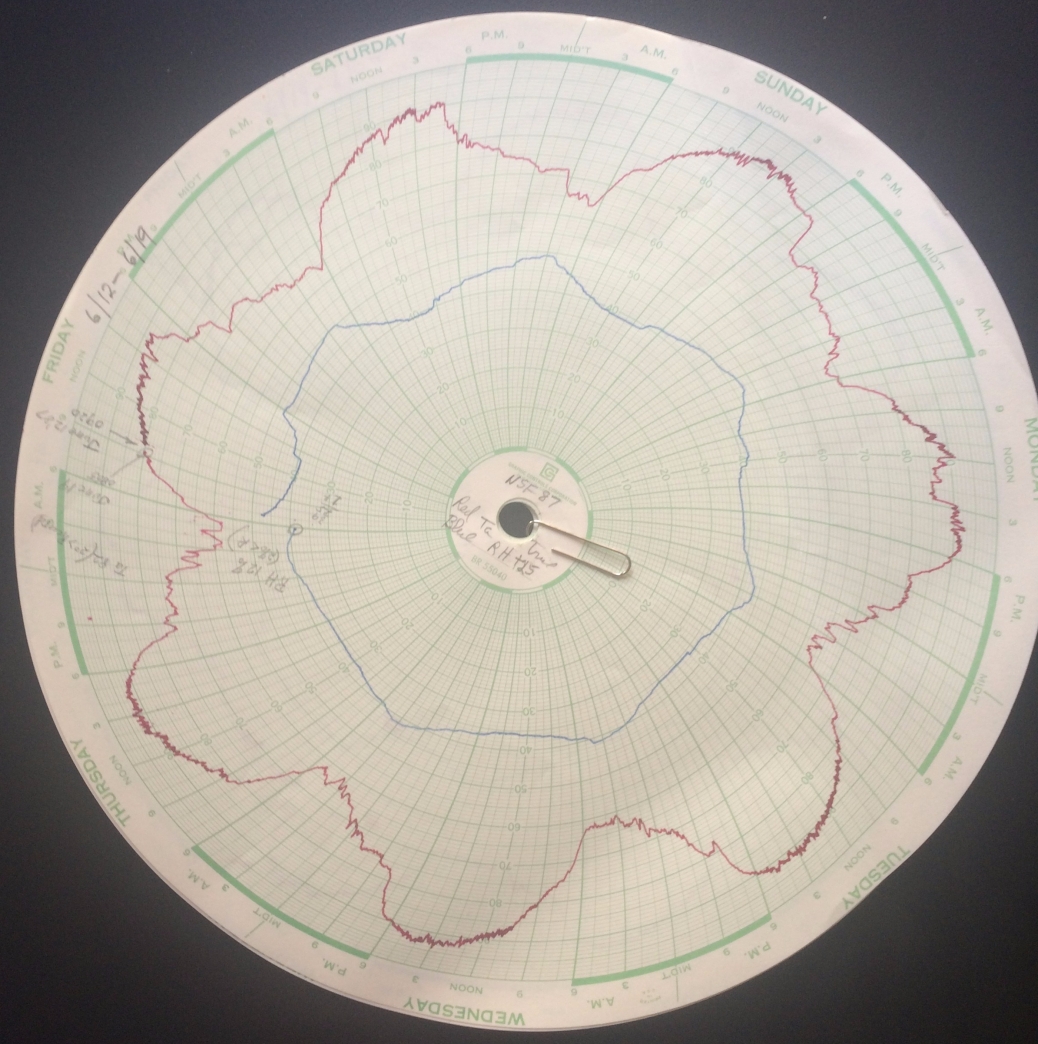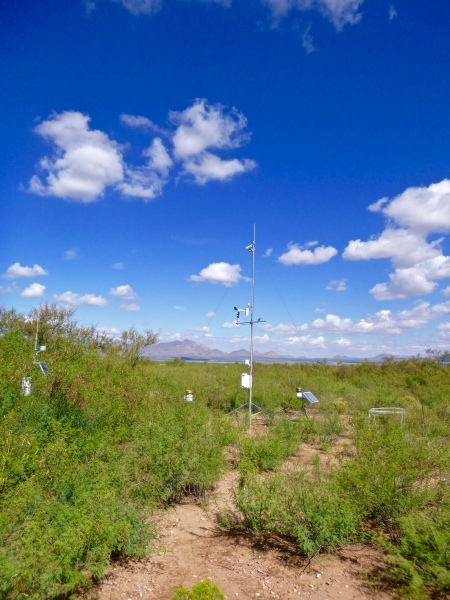For the history of the project, weather monitoring has always accompanied the collection of rodent, plant, and ant data. At first, this was done manually. Portalites from 1980 to 1989 measured rain in a rain gauge, and used something called a hygrothermograph to measure temperature and humidity.

Hygrothermograph
Then things started to get fancy. In 1989, an automated weather station was installed. This is the desert though, and leaving expensive toys out in the rain, dust and lightning takes it’s toll.

At least the lightning storms leave us with some nice scenery after they try to blow up our weather station.
All things considered, our weather stations have stood up pretty well. The first lasted from 1989 until 2002. And the station from 2002 is still limping along, although it’s had its moments (it tends to have a bit of a tantrum after being struck by lightning). We connected to the dataloggers for those stations directly. That is, as part of their monthly duties, the rodent RA has to connect to the datalogger, download the data, and bring it back to the lab for checking and appending to the database.
Anticipating the 2002 station’s impending demise, in August 2016 we upgraded to a new station, and took the opportunity to make some improvements.

The majestic new station
Of course we continue to collect data on precipitation, temperature and humidity. But we’ve also gotten to add a wind sensor (wind speed and direction), pyranometer (solar radiation), and barometer (atmospheric pressure). Having these additional data means that we can also calculate things like evapotranspiration, sunshine hours, and windchill. We have also added a new program to collect fine-scale precipitation data during storms. When a precipitation event begins, the datalogger begins recording total precipitation every 5 minutes until the storm ends.
The addition of a cellular modem is another major improvement. Rather than downloading it monthly in the field, we access the data remotely. The data trickle in to our data repo whenever edits are made to trigger a new build, or at least once a week, and quality control happens automatically. Our station has a Wunderground account (from whence the fancy little widget in the sidebar comes). And we’ve mounted the phenocam (featured in an earlier post, and another widget in the sidebar) to it.
Aside from just being darn cool, the upgrades have improved our data collection. We can see what the weather has been at our exact location at any time. That means we can know what to expect from the plants before we go for a census (as much as that’s possible). And we can communicate with the datalogger at anytime. If something is wrong with the weather station, we’ll know immediately. It may be possible to fix the problem remotely. If not, the rodent RA can plan to fix it while she’s down there, instead of discovering the problem at the site, waiting until the next month to fix it, and losing at least a month worth of data. And we can always send new programs to the datalogger, if we want to add new data tables make improvements.
Find our weather data, updated sub-weekly, on the Portal Data github repository.
Tags: weather


October 26, 2017 at 8:25 am |
Reblogged this on Jabberwocky Ecology and commented:
How has our collection of weather data at the Portal Project changed through time? Weecology Project Manager Glenda Yenni recounts the saga of the weather stations.
December 15, 2017 at 12:15 am |
Which weather station you installed? I have a weather station installed in my home (Ambient WS – 1002). Can I add a cellular modem to my weather station?